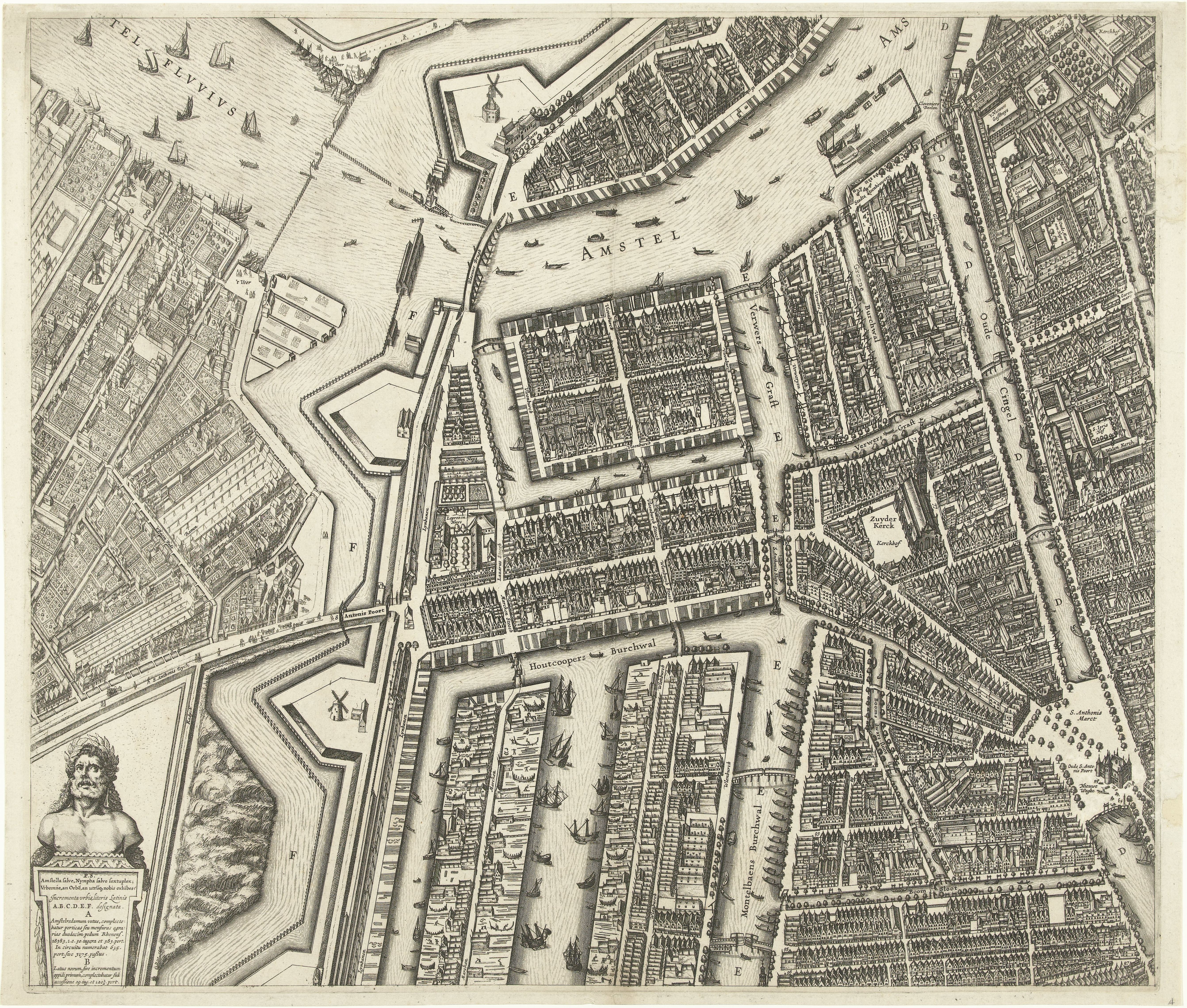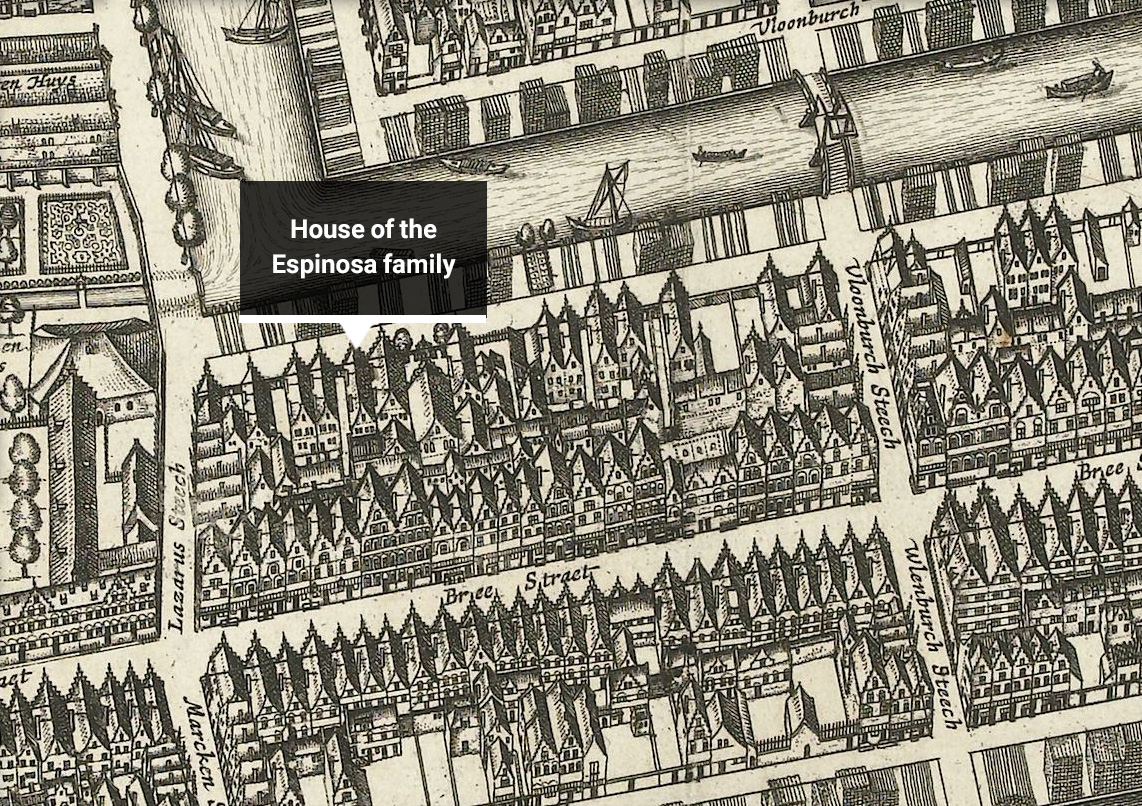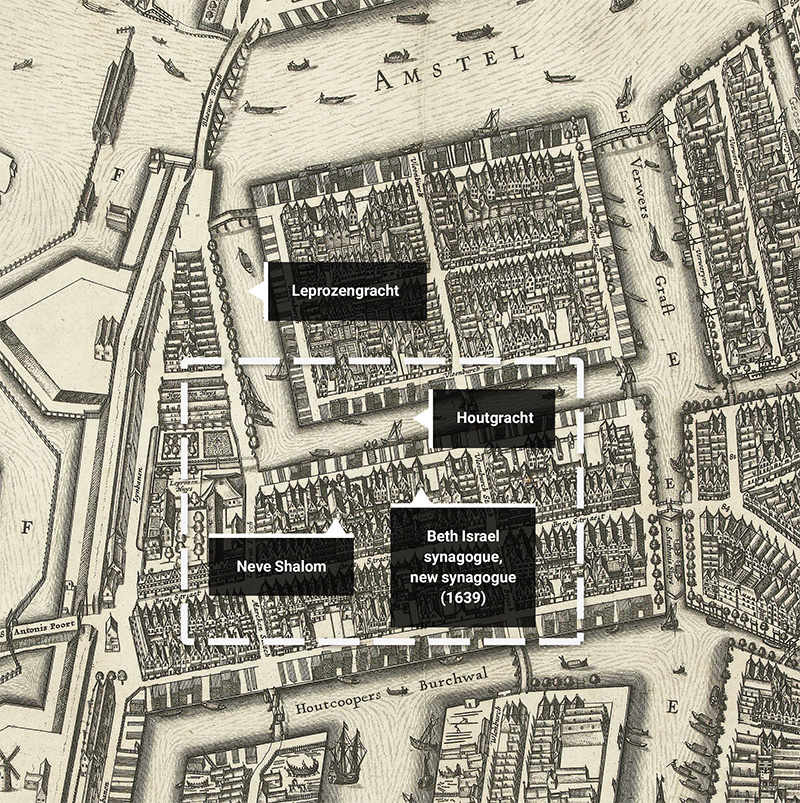- Address
- Vlooienburg quarter
- City
- Amsterdam
- Country
- Netherlands
- Latitude
- 52.36749320
- Longitude
- 4.90187220
Presumably, Spinoza was born in a house somewhere in or around the Vlooienburg quarter, but archival records are missing.
Vlooienburg (also ‘Vloonburch’ or ‘Vloënburch’, origin of the toponym uncertain, translation: embankment) was the name of a rectangular artificial island—in front of the islands Rapenburg, Marken and Uilenburg—in the bed of the river Amstel. The embankment was originally heightened for the storage of wood at the very edge of the old town of Amsterdam between 1592 and 1596, during the so-called ‘Tweede Uitleg’, viz. the plan for the new second urban expansion. Today, that is the location where the Amsterdam ‘Stopera’ building is standing. Vlooienburg was the official topographical name of the quarter comprising timber-yards and blocks of houses (behind the Breestraat and Sint Antoniebreestraat) tightly closed in between Verwersgracht (now Zwanenburgwal), Leprozengracht and Houtgracht and the quays (‘wallen’) alongside those three canals. From the outset, this was also the exact spot where the three Amsterdam Portuguese-Israelite congregations built their synagogues. The old church of Beth Jacob (‘House of Jacob’, founded in 1602) was located on the Vlooienburg island (alongside the Houtgracht) itself, at the first floor of a house named Antwerpen. It was commonly indicated as ‘the large church of the Jews’ (‘de grote Kerck der Joden’) and could also be reached by small passage from the Verwersgracht canal. Neve Shalom (‘Residence of Peace’, founded after 1610) and Beth Israel (‘House of Israel’, separated from Beth Jacob in 1618) had their synagogues erected between the Breestraat and Vlooienburgsteeg, at the other side of the Houtgracht. On 3 April 1639, those three congregations became all unified in one community: Kahal Kadosh de Talmud Torah. In the same year, the congregation started construction of a new synagogue at the Houtgracht in 1639 (Waterlooplein, 33–37/39, demolished in 1931), at the grounds of the former synagogue of Beth Israel and adjacent plots. A larger, prestiguous synagogue (nowadays located at the Jonas Daniel Meijerplein) in brick structure was built under supervision of Elias Bouwman and Daniel Stalpaert between 1671 and 1675, on the location of the old leprosy nursing home which was also known as ‘Lazarushuis’ and ‘Sint Antoniegasthuis’. Another synagogue, the church of the Jewish Ashkenazi congregation, was also located at Vlooienburg.



.jpg)